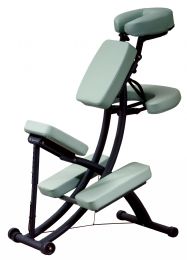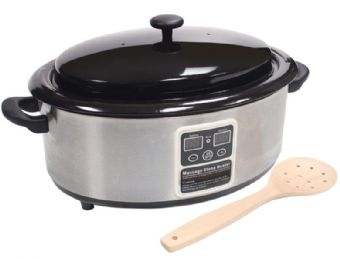





What Is a Massage Chair and Where Is It Used?
A massage chair is an ergonomically designed portable chair used by a massage therapist who can effectively produce therapeutic results in a brief period of time (10 to 20 minutes) by concentrating on the areas of the greatest tension, usually the back, neck, shoulders, arms and hands. A person will straddle the massage chair and rest the front of their body against the chairs padded chest pad and place their head into the crescent-shaped face rest cushion, allowing the massage therapist easy access to work on the back, shoulders, arms and neck of the user.
A portable massage chair offers a message therapist to be more mobile in their practice to offer on-site massage in many varied environments such as business offices, trade shoes, the mall, employee appreciation events, corporate settings, conferences, a sporting event, or a home party, and the clients do not need to disrobe while receiving a chair massage.
Why Would Anybody Get a Massage?
A massage can improve the lymphatic and venous flow by manipulating the muscles and increasing the blood flow and circulation within the muscles and tissues, allowing them to absorb important nutritional elements while at the same time clearing toxins out of the massaged areas.
Massage can also decrease tension while improving muscle flexibility, helping to loosen strained and tight muscles. Possibly the most beneficial aspect of a massage is the increase of endorphin levels, the ‘feel good’ chemicals that flow throughout the body. Increased endorphin levels can induce positive feelings as well as reducing pain, reducing anxiety and produce a quicker recovery.
Advantages of Using a Massage Chair vs. a Massage Table
Portability: Although some massage tables are portable, massage tables are usually more heavy and bulky to carry and transport and may not be the best ‘fit’ in public environments, such as a business office or a mall setting, to give a massage. Massage chairs are mostly lighter, smaller, and easier to carry and are used specifically used in specific venues.
Client positioning: With a traditional massage table the client will disrobe and lie face down onto the table, putting their face into a head rest while lying down, with the massage therapist generally standing next to the client while applying the massage. A massage chair positions the client seated in a forward-tilting position on the massage chair, allowing the massage therapist to stand directly behind the client which offers a easy access to the places that get sore the most in people, which are usually the back, shoulders, arms, and head/neck regions.
Venue of massage: A massage table is used for longer massage sessions in spas, massage therapy businesses, and homes where there is space and privacy for the user to undress and relax in security and comfort to receive a full-body massage. A massage chair is used in public places such as a public event, corporate offices or the mall, and for shorter massage sessions where the client is not required to undress.
Some Questions about a Massage Chair
How much space is needed in using a massage chair?
A minimal space is required, usually a 5’ x 6’ area is needed for a massage therapist to set up and comfortably use a massage chair.
Are massage oils used?
No. Oils are not used for a chair massage.
Does the person receiving the massage need to remove their clothing?
No, a recipient of a chair massage will remain fully clothed. At most the massage therapist will ask the client to remove an outer jacket or obstructive jewelry during the massage.
Can a pregnant person get a chair massage?
Yes. A massage can be very beneficial for a woman during pregnancy in helping to increase circulation of nutrients throughout her body and also to relieve stress. A pregnant woman should tell the massage therapist of her pregnancy so they can assure full comfort and safety of the client.
If asked, can the massage therapist work, or concentrate on one part of the body?
At the beginning of a chair massage the massage therapist will ask the client if they have any specific concerns or areas that they would like the massage to focus.
How long is a typical chair massage?
There are usually 3 different length sessions, 10 minutes, 15 minutes, and 20 minutes.
A 10-minute chair massage the therapist will focus on relieving muscle tension in the shoulders, neck, and back.
A 15-minute chair massage the therapist will work on relieving tension in the neck, shoulders, back, arms and hand.
A 20-minute chair massage the therapist will do a more in-depth work on the same areas as a 15-minute massage.
Are there any medical contraindications for a chair massage?
First inform the massage therapist of any ongoing or acute health conditions before a chair massage. Some medical contraindications include but are not limited to uncontrolled diabetes, herniated discs, uncontrolled hypertension, numbness or tingling if the body, especially the hands or feet, and malignancy.
Hulet Smith, OT
Rehabmart Co-Founder & CEO
ws